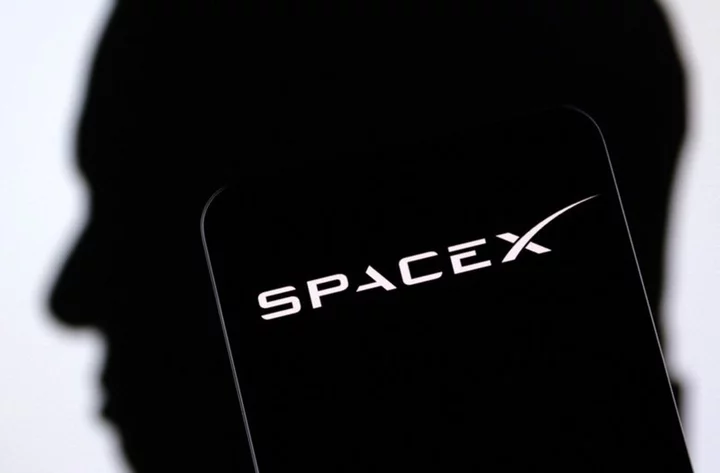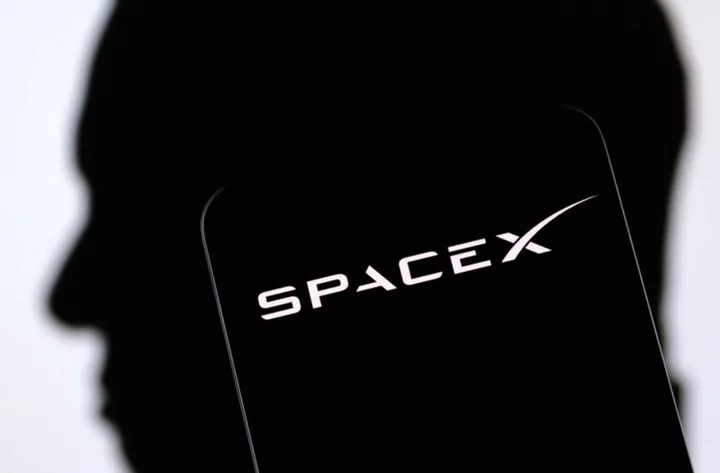
SpaceX lawsuit could be key test of US policy on bias against refugees
By Daniel Wiessner A new lawsuit accusing SpaceX of illegally refusing to hire asylum recipients and refugees could
1970-01-01 08:00

Virgin Galactic: Student Ana Mayers on going to space with her mum
Two weeks after she was in space with her mum, Ana Mayers is going back to university in Scotland.
1970-01-01 08:00

Chandrayaan-3: India releases first video of lunar rover Pragyaan's Moonwalk
India's space agency Isro's footage shows Chandrayaan-3's rover Pragyaan for the first time ever.
1970-01-01 08:00

Inside Mali: What now for the country that bet its security on Wagner?
Fears over Mali's future are growing - it relies on Wagner for security but the group's leader is now believed to be dead.
1970-01-01 08:00

Ukraine aid worker Chris Parry's parents go on aid mission there
The Parry's will visit the war-hit country to deliver further aid in their son's name.
1970-01-01 08:00

EU safety laws start to bite for TikTok, Instagram and others
Nineteen large platforms have to start complying with new rules as soon as Friday or risk big fines.
1970-01-01 08:00

US sues SpaceX, alleges hiring discrimination against asylum seekers, refugees
By Kanishka Singh WASHINGTON (Reuters) -The U.S. Justice Department sued Elon Musk-owned rocket and satellite company SpaceX on Thursday for
1970-01-01 08:00

Mysterious ‘dark spot’ on Neptune seen from Earth for the first time
Scientists have seen one of the mysterious “dark spots” on Neptune from Earth for the first ever time. Researchers spotted the feature using the European Southern Observatory’s Very Large Telescope, or VLT. Using that telescope, astronomers were able to examine a large dark spot – which was joined by a smaller, bright spot, they said, of a kind that has never seen before. Scientists still do not know why those spots form on Neptune’s blue atmosphere. But they hope that the new observations could help answer questions about their origin. “Since the first discovery of a dark spot, I’ve always wondered what these short-lived and elusive dark features are,” said Patrick Irwin, professor at the University of Oxford and lead investigator of the study. It has already helped rule out one possibility: that the dark spots are caused when the clouds on the planet clear. The observations instead suggest that the spot is formed when air particles make a layer below the main one go darker, caused by ice and haze mixing in the atmosphere. Understanding the spots has been difficult because they leave the planet’s surface as mysteriously as they arise. They have also been difficult for researchers to actually examine, given the difficulty of spotting them through telescopes. Previously, scientists were forced to send spacecraft to see the spots, and the first was observed in 1989, when Nasa’s Voyager 2 flew past. It disappeared a few years later. In recent years, scientists have been able to examine them with the Hubble Space Telescope, which has seen more spots on the atmosphere. When it did so, astronomers were able to point ground-based telescopes towards them, allowing for more detailed research. “This is an astounding increase in humanity’s ability to observe the cosmos,” said Michael Wong, a researcher at the University of California, Berkeley and a co-author on the paper. “At first, we could only detect these spots by sending a spacecraft there, like Voyager. “Then we gained the ability to make them out remotely with Hubble. Finally, technology has advanced to enable this from the ground.” The new observations allowed scientists to examine the spot using the VLT’s Multi Unit Spectroscopic Explorer, which let them split the light from Neptune and the spot into its component colours. That in turn means that astronomers can understand the height at which the spot sits, and how the atmosphere is composed. As well as helping examine the dark spots, scientists also saw a surprise result: another, entirely new kind of bright spot. “In the process we discovered a rare deep bright cloud type that had never been identified before, even from space,” said Wong. The work is described in a new paper, ‘Cloud structure of dark spots and storms in Neptune’s atmosphere’, published in Nature Astronomy. Read More Mysterious dark spot on Neptune detected from Earth for the first time We just received the first ever pictures taken near the Moon’s uncharted south pole Chandrayaan-3 mission rover exits Moon lander to explore lunar south pole Mysterious dark spot on Neptune detected from Earth for the first time We just received the first ever pictures taken near the Moon’s uncharted south pole Chandrayaan-3 mission rover exits Moon lander to explore lunar south pole
1970-01-01 08:00

US House committee leader wants probe of space command HQ decision
WASHINGTON The chairman of the U.S. House of Representatives Armed Services Committee on Thursday said he has requested
1970-01-01 08:00

Pacers projected lineup and rotations heading into 2023-24 season
The Indiana Pacers rebuilt last season and played better than expected. They made some big improvements this offseason and their rotation is looking dangerous.
1970-01-01 08:00

What now for Wagner after Prigozhin's reported death?
With a global military footprint, experts are asking how Wagner will fill the void left by its leader.
1970-01-01 08:00

Chandrayaan-3 rover rolls onto moon's surface as ecstatic India celebrates
By YP Rajesh, Sakshi Dayal NEW DELHI (Reuters) -The moon rover of India's Chandrayaan-3 exited the spacecraft on Thursday to
1970-01-01 08:00
